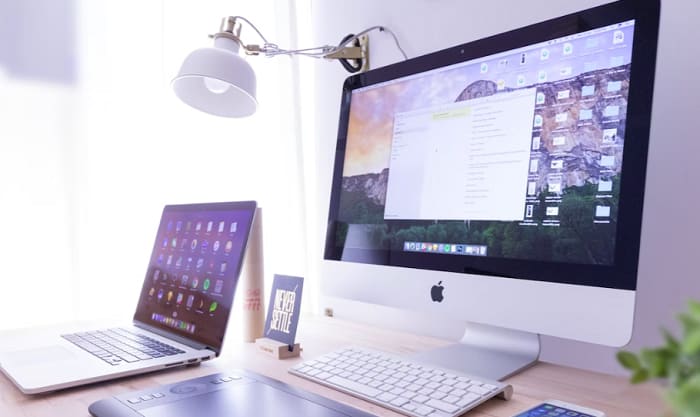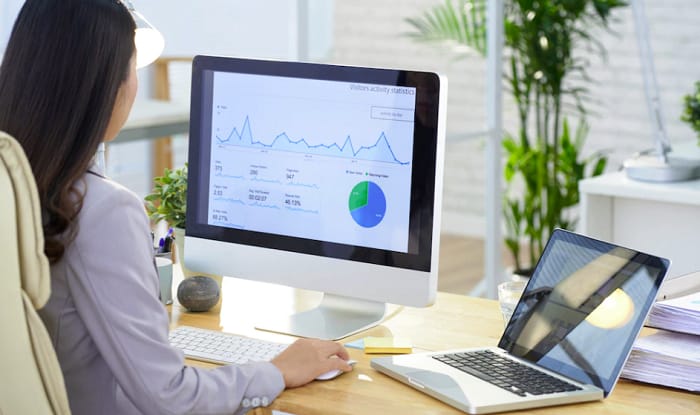A computer contains various electronic components, from its interior to exterior. You might wonder how much power a PC consumes with all these components.
But did you know that a computer set only requires 0.41 amps to 6.25 amps? Yes, that’s right! The number is not as high as you might think.
If you want an answer to the question “How many amps does a computer use?” continue reading for a detailed take.
Table of Contents
How Many Amps Does a Computer Draw
A computer consists of various electrical components such as memory, CPU, fans, and other electrical components requiring electricity to function. These components will determine the rating of the computer power supply.
Aside from them, it would be best if you also considered the rating of external peripherals such as a computer monitor, printer, internet modem, and speaker to calculate its energy consumption.
For example, a printer has an average of 0.5 amps; a fan uses 0.3 amps; a speaker around 1 amp; and a monitor 0.25 amps. You may need to sum it all up to get the average amps for computers.
Typically, a computer setup only draws 2 amps. However, this estimate can change depending on the unit you have. The PC amps may go high if you use a gaming computer or low if you use a laptop.
To determine the current drawn by your device, you can use the various calculation methods below.
However, before we get into them, here is some background about the different types of computers.
Types Of Computers
In general, different types of computers can draw different amp ratings. Here are some ideas about each type of computer amp draw.
- Desktop Computer
A complete set of standard computers with a monitor, printer, and other peripherals usually have a rating of 0.25 to 2 amps. However, this rating may get higher depending on its usage and setup (whether there are additional fans and lighting, a high FPS monitor, and more).
- Gaming Computer
Generally, the gaming PC is known for being electricity-hungry. The hardware demands more because of the gaming apps. It may use more than 6 amps per hour due to its graphics card that requires being connected to a high-rating computer power supply amp.
Note that a gaming desktop uses more energy than a gaming laptop. However, when it comes to power usage, it still differs significantly from typical desktop and laptop setups.
- Laptop
A laptop is a type of PC that is much more portable and energy efficient than other computer types. It is as effective as a desktop, yet laptop power consumption is less than 1 amp per hour on average.
One significant disadvantage of a laptop computer over other types is that it is more expensive to purchase.
Average Energy Consumption of Different Types of Computer
| Computer Type | Average Watts | Average Volt | Average Amps |
| Desktop Computer | 60 – 250 Watts | 110 – 240 volts | 2 – 5 Amps |
| Gaming Computer | 65 – 550 Watts | 110 – 240 volts | 2 – 8 Amps |
| Laptop Computer | 15 – 45 Watts | 110 – 240 volts | 0.41 – 0.84 Amps |
Please note that the average gaming PC wattage depends on the device type. Generally, a desktop has a higher wattage rating, reaching over 1,000 watts if we’re talking about an advanced model, whereas a laptop for gaming consumes only 300 watts.
Also, note that depending on where you live, how many volts your computer needs will differ. Here in the US, most PCs typically require 110 to 120 volts.
What Factors in a Computer’s Consumption of Electricity?
Do you ever wonder why other computers use less energy than yours? Perhaps you should check for factors affecting its power consumption, such as the examples below.
1. Outdated unit
Often, old computer units consume more energy than new high-end ones. For example, if you use an old CRT 24 inch monitor, you will not only get low-quality images but also consume more power.
2. Low-Quality Parts
Another factor that may affect the computer’s power consumption is using low-quality parts. When looking for a system unit or buying upgrades, you will see devices with similar specs but at different prices.
This variety in pricing could be because some brands use parts with subpar quality, which can break easily or malfunction. As a result, the PC may get overheated, resulting in higher electrical consumption.
3. Software
The software or programs you use on your computer might also have an impact on its energy consumption. Some apps, particularly gaming apps, require high wattage since the computer hardware has to work harder to run them.
4. Dirt
Another common cause of your PC drawing extra power is dirt or dust. It can build up in the heat sink, causing the fans to work harder and consume more power.
How to Calculate Your Computer’s Power Consumption?
There are three simple methods for determining a computer’s energy rating, which are detailed below.
1. Using an Online Tool
If you want a detailed estimate of your PC’s energy consumption, you can use an online power supply calculator like Outervision.
All you have to do is enter your PC’s specifications and usage time into the tool. Then, press the calculate button to obtain the result.
2. Using a Software
Another method for determining your computer’s energy consumption is to use software such as Open Hardware Monitor. However, unlike the online tool, you must download and install it to determine its energy use.
Aside from actual energy consumption, you may also monitor the CPU’s clock speed and temperature of various peripherals within your computer. The only drawback of this method is that you may need to combine multiple ratings to obtain the total value.
3. Using a Meter
A device meter is another simple way to determine a computer’s energy consumption, whether you want to know the amperage, voltage, or other measurements.
When you turn on your computer and connect it to the meter, you will see the real-time reading of energy consumption on the screen. Homeowners can use this device for other appliances as well.
Tips to Ensure Energy Efficiency
Although computers don’t have high energy demands, it is still better if you can save some money while running them. Try these recommendations to keep your computer energy efficient.
- Enable the auto sleep feature, so your computer goes on standby when you’re not using it.
- A laptop is much more energy efficient than a desktop PC, so why not take advantage of it?
- Turn off your computer once you finish using it, not only to save electricity but also to keep your device in good condition.
- Use a power strip with a surge protector to keep your computer set safe and make it easy for you to unplug all the devices with your Dell or any brand of PC at once.
- Always clean your PC as dust can increase energy consumption.
Conclusion
Knowing how many amps does a computer use will assist you in determining the current supply for your PC. This knowledge will then help you adjust your setup to cut down on electric bills.
Doing so will keep your unit in good working condition so it lasts longer and functions better.
If you would like to find out more information on a similar topic, such as finding a guide on calculating amps for a coffee maker or tips on resetting a tripped circuit breaker, do not hesitate to email us at the address below or leave a comment. We will try to respond as soon as possible.

I am Edwin Jones, in charge of designing content for Galvinpower. I aspire to use my experiences in marketing to create reliable and necessary information to help our readers. It has been fun to work with Andrew and apply his incredible knowledge to our content.



